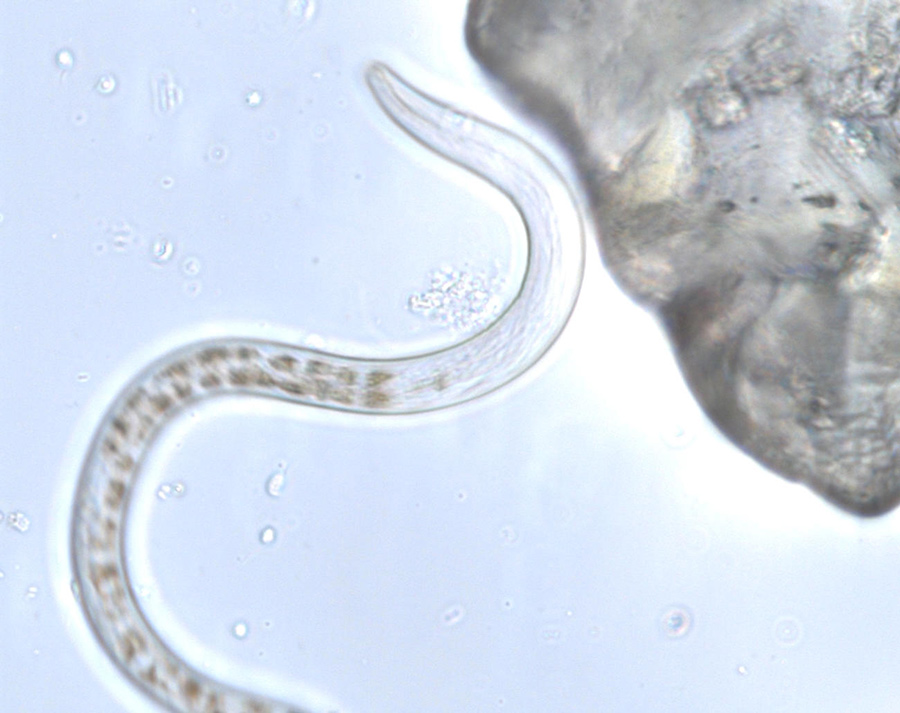This method, in accordance with DIN ISO 10872-L55 norm, is used for the determination of the toxicity of soils and sediments. Some toxins may impair the growth and fertility of nematodes.
The test organism is Caenorhabditis elegans (var. Bristol, stem N2), a bacteria-feeding nematode that typically occurs in soils and polysaprobic sediments of fresh water bodies. The approximately 1mm-long nematode feeds mainly on bacteria and organic materials in the soil.
Two sexes occur in C. elegans: hermaphrodites and adult males, and fertilization is performed either by the hermaphrodites themselves or by adult males. Under 20°C and optimal conditions, the doubling time of the species is about 3 days. In this time the nematode develops from embryo through 4 juvenile stages into an adult individual.
After 72 and/or 96 hours exposure of the test organism to contaminated sediments, the effect on length growth, fertility and reproduction is assessed through comparison with control groups.


